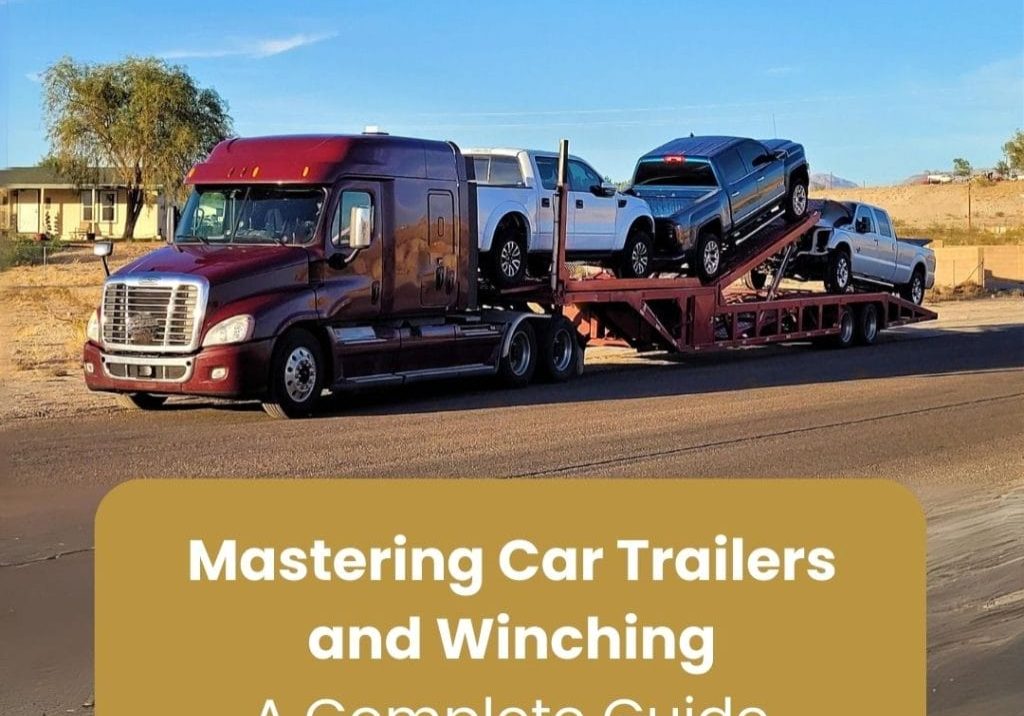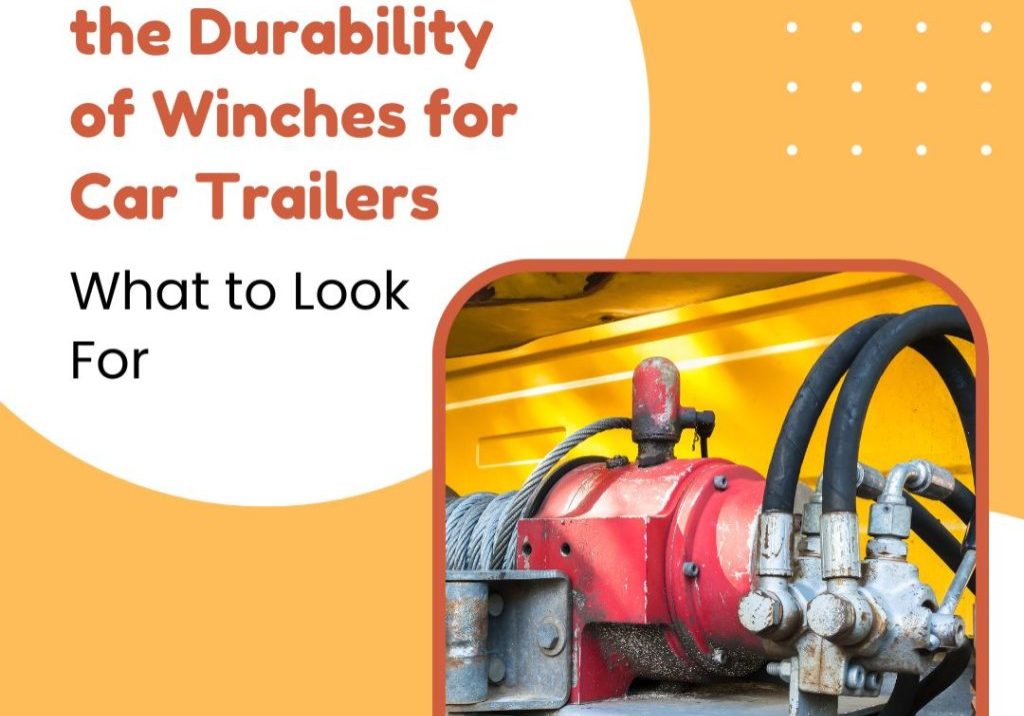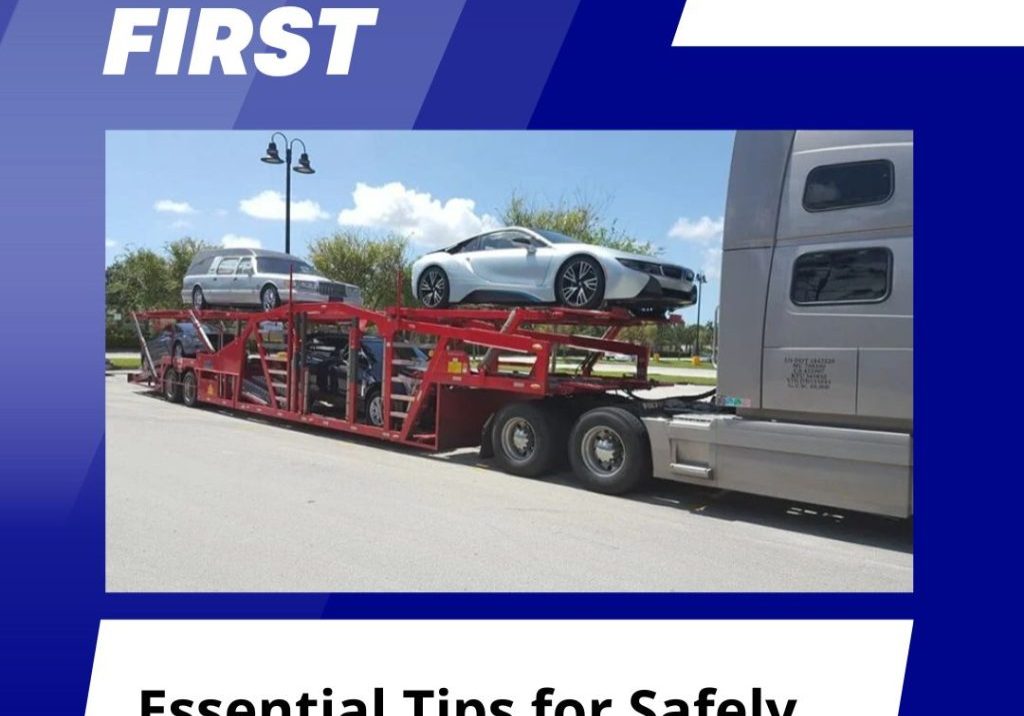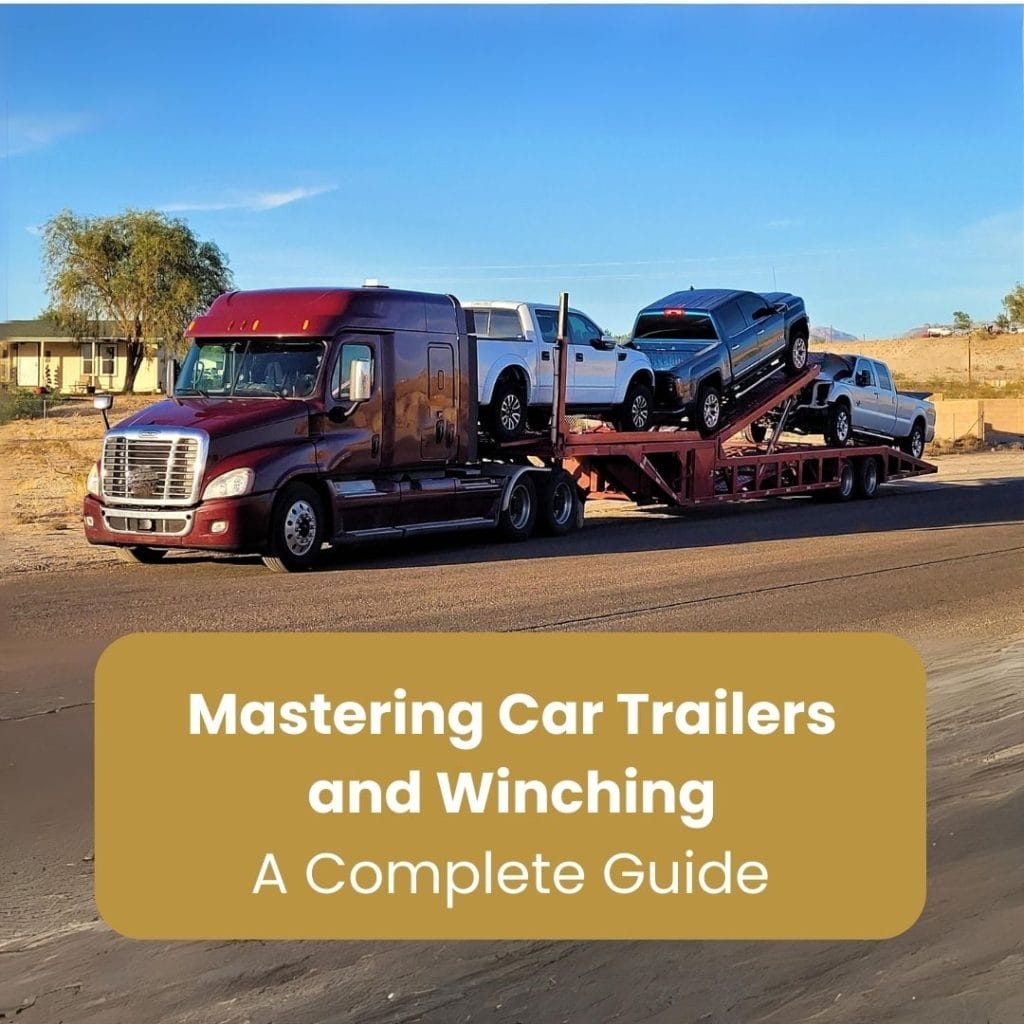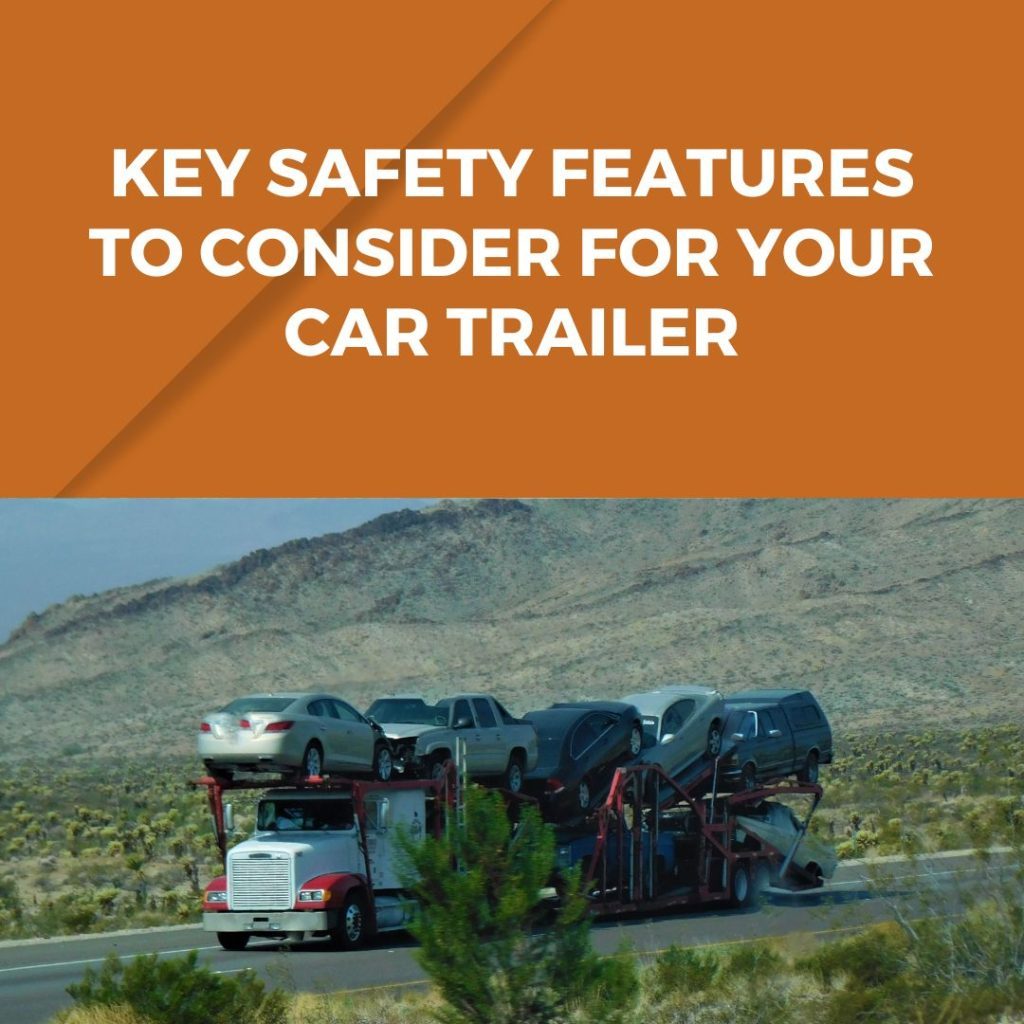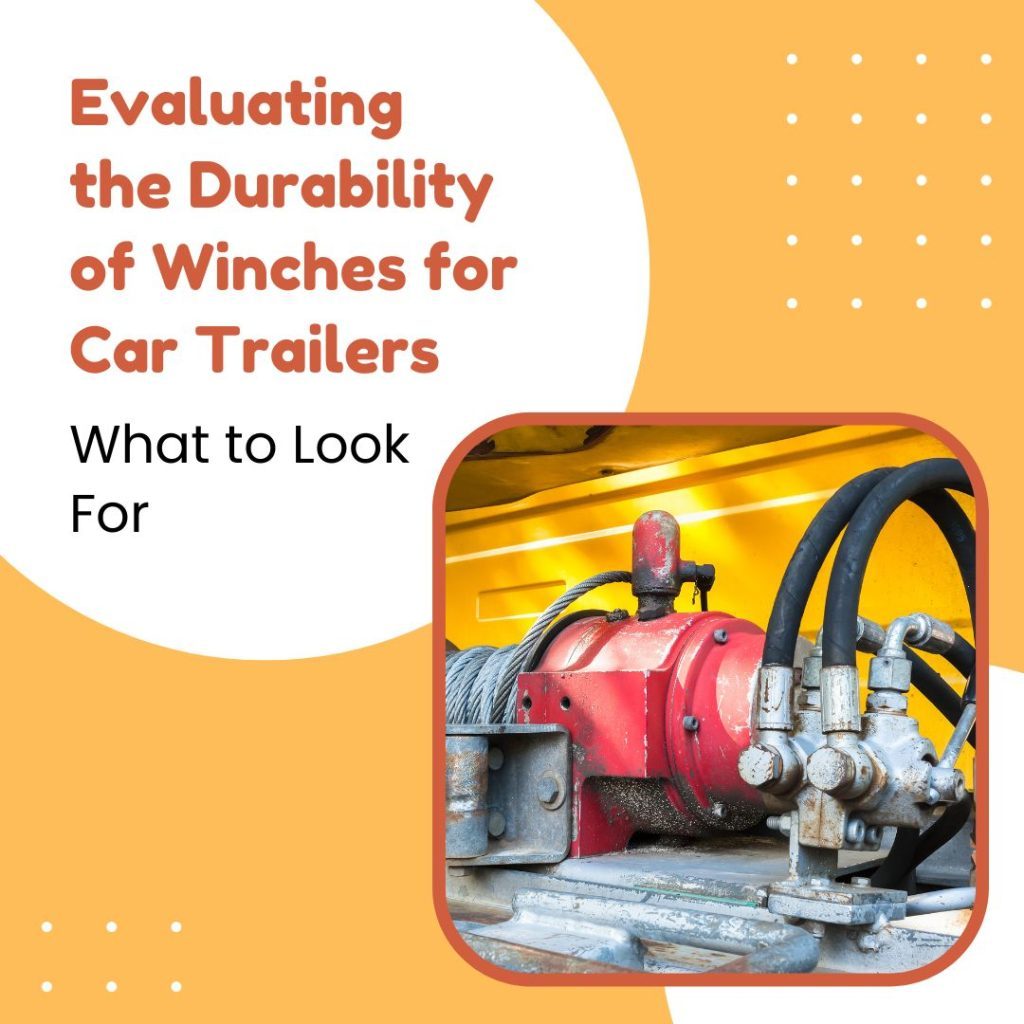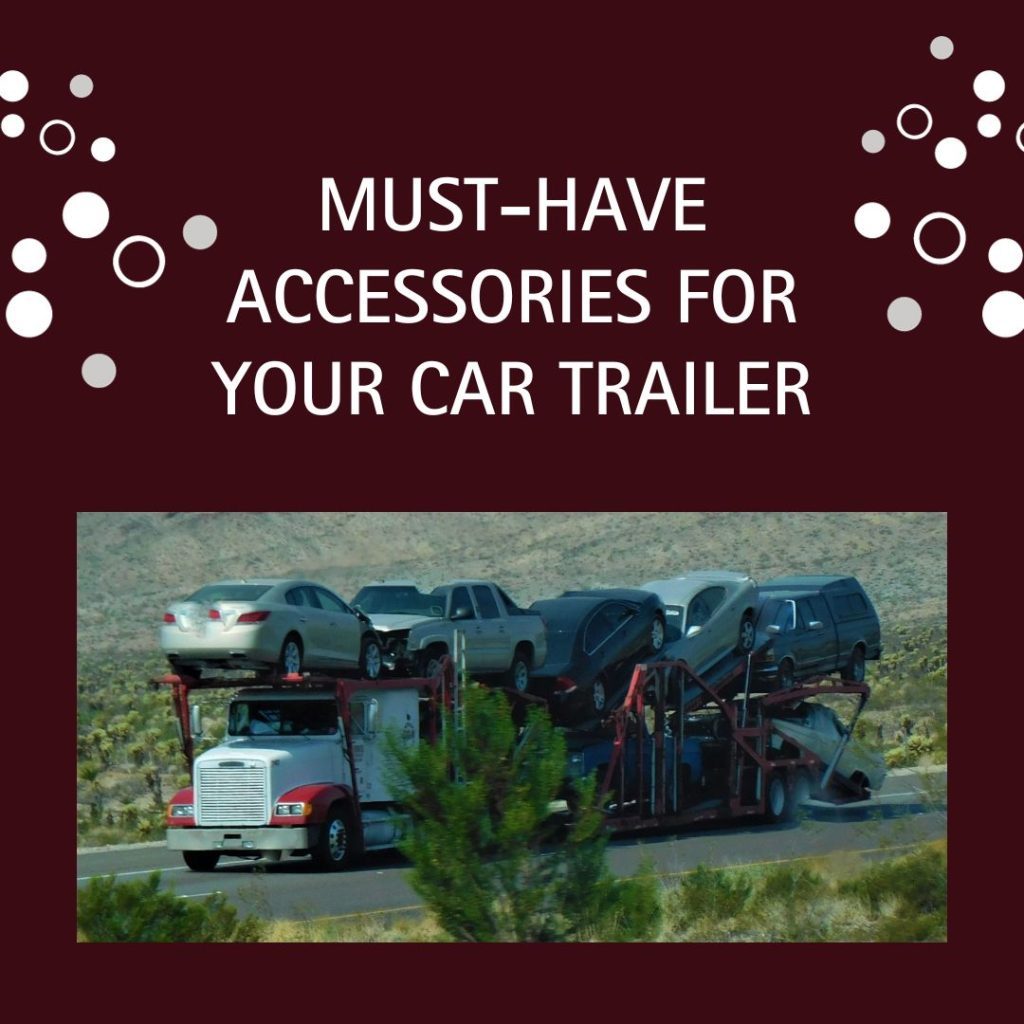Winches on trailers are typically positioned at the rear of the vehicle, either close to the back of the front vehicle or at the trailer’s rear end.
Because the trailer can be detached from the main vehicle, winches have a distinct battery connection, ensuring they operate independently without relying on the vehicle battery.
The entire winch, along with its extra battery, straps, and cables, is housed in protective boxes known as toolboxes, which are installed at the rear end of the trailer.
Guide to Installing a Winch on Your Car Trailer
Explore these top-notch mounting ideas for your trailer winch. Prioritize safety precautions to prevent any injuries or mishandling of equipment during the installation process.
On Car, Utility, Snowmobile & Flatbed Trailer:
Option 1: If your trailer is equipped with a railing, the optimal method for winch installation is to mount it on the railing using a receiver hitch mount, as illustrated in the image below.
Option 2: Mounting on the trailer’s floor bed can be achieved by employing a winch mounting plate. Secure it in place using U bolts that pass through the floor bed and connect to the trailer frame.
If you prefer the winch to be detachable, opt for a hitch-mounted winch plate equipped with a handle, and affix a 2-inch hitch Combo Bar to the trailer.
In instances where the winch is not positioned at the center, incorporate a pulley block with a D-Ring attachment in the middle for your pulling needs.
For trailers with a wooden bed, utilize the trailer’s railing for winch installation.
On Enclosed Trailer:
Option 1: Mount the winch inside the cabinet, securing it to the floor with a bracket. Ensure that the winch is positioned at least 6 inches above the floor to prevent cable dragging. This approach allows you to stow the winch conveniently inside the trailer.
Option 2: Utilize a pre-made in-floor winch mount to affix the winch beneath your trailer. Cut the floor to accommodate the winch mount’s size, place the winch inside, and secure it with bolts. Attach the Fairlead to the Fairlead holder, following the installation instructions provided with the mount.
Option 3: Install the winch on the trailer’s tongue within a trailer tongue box, securing it to the trailer frame or using mounting brackets welded to the trailer for support.
If the winch is not centrally positioned, employ a pulley block with a D-Ring attached to the center for your pulling applications.
On Tilt Deck Trailer:
Attach a winch plate mount with a hitch combo bar to the trailer. Use a 2″ Trailer Hitch Tow Ball mounted to the winch.
On Gooseneck Trailer:
Weld a customized winch mount onto the low deck of the trailer to position your winch. Attach a D-Ring to enable the use of a snatch block for lifting heavy objects and operating at various angles. For more details, refer to the instructional video.
When winching on various types of trailers, the most effective mounting approach is on the truck’s rear bumper, compatible with a majority of trailers. By attaching the winch to a snatch block, you can perform pulls from a high point on a gooseneck trailer, and you can use it without a trailer, eliminating the need for power on the truck.
For winching on different types of vehicles, the optimal method involves mounting the winch on a receiver hitch and then welding a receiver to the trailer. This approach allows you to detach the winch for use on any vehicle equipped with a receiver, providing a lifesaving solution in emergencies.
Depending on the winch’s mounting location, there are two general approaches to power/wire the winch on your trailer.
How to Wire a Winch on a Trailer
Wiring it to the Vehicle Power Source
In this approach, a quick disconnect is utilized to link your vehicle’s power source to the trailer-mounted winch. This method is well-suited for daily use in light and medium-duty applications. It is essential to have a minimum of 440 cold-cranking amps in the vehicle battery and a 60 A alternator.
⚠️ Always prioritize your safety by wearing eye-protective glasses when working around a battery.
Select a convenient location at the rear end of your vehicle to affix the quick disconnect. This disconnect comes with two wires: a longer power cord and a shorter ground cord.
Ensure that you ground the shorter cord to a clean metal surface on the vehicle’s frame, or if a grounding source is available, that will suffice.
Route the longer power cord from the back of the vehicle toward the front, connecting it to the vehicle battery, avoiding areas where the cable might heat or be pinched due to the operation of other vehicle components.
Under the vehicle’s hood, connect the power cord to the positive terminal on the car battery and ground the battery by attaching a separate wire from the negative terminal to a secure grounding source.
Install the in-line circuit breaker with the winch’s power cord that connects to the vehicle battery.
Follow the instructions manual to wire up the winch, and at the end of the two wires originating from the positive and negative posts on the winch, install a disconnect. Route this disconnect to the trailer’s coupler, where it will connect with the disconnect from the rear end of your vehicle.
Wiring it to a Separate Trailer Mounted Battery
In this approach, the winch operates independently of the vehicle battery, utilizing a separate battery as its power source. This setup allows the trailer to be disconnected from the primary vehicle while still enabling the use of the winch when required. However, it is crucial to establish a reliable method for periodically recharging the separate battery. This can be achieved by connecting the trailer connector circuit to the vehicle battery, ensuring a regular charge to the separate battery through additional wiring.
⚠️ Before connecting the winch, verify that the battery is in good condition and avoid contact with battery acid and other contaminants.
It is advisable to mount both the battery and the winch, along with their connections, inside a toolbox to shield them from the elements, thereby extending the lifespan of all components. Attaching the toolbox to the trailer or truck may involve drilling and sawing to properly align all components before securing them in place. Proceed to wire up the winch to the battery in a manner similar to how it would be done with a car battery.
Adhere to the guidelines outlined in the manual and make certain to incorporate the In-line circuit breaker to safeguard against overload. When utilizing the winch, be sure to disconnect the electrical connections between the trailer and the primary vehicle. This connection is solely intended for recharging the independent trailer battery. Leaving this connection open during operations could overload the wire transmitting current to your trailer battery, resulting in damage to the entire circuit along with the battery.
Ensure that you do not exceed the weight capacity of your winches by adding additional loads. By taking extra precautions with the auxiliary battery and all winch connections, you can be confident in the long-term efficiency of all winching operations.
Conclusion
In conclusion, properly mounting and wiring a winch on your trailer is crucial for efficient and safe operations. Depending on the type of trailer and vehicle you are using, there are various methods to consider when mounting and powering your winch. It is important to follow manufacturer instructions carefully and prioritize safety at all times.
Whether you choose to wire it directly to your vehicle’s power source or utilize a separate trailer-mounted battery, make sure to regularly maintain and recharge the battery. Additionally, consider mounting the winch inside a toolbox for added protection from the elements. By following these tips and guidelines, you can maximize the use of your winch and ensure its longevity for all your future operations.
When it comes to operating a business, efficiency is key . By taking the time to properly mount and wire your winch, you can save valuable time and resources when it comes to towing or hauling operations. This is especially important for business owners of small to medium businesses, as every minute and dollar counts in maximizing productivity. With the right tools and knowledge, such as how to set up a winch on a trailer, you can improve your business’s overall efficiency and productivity while also ensuring the safety of yourself, your employees, and your equipment. Consider implementing these innovative flooring ideas for conservatories to maximize space and style in your workplace. Overall, investing in a reliable winch and properly setting it up on your trailer can greatly improve towing operations and provide a lifesaving solution in emergencies. ⚠️ Remember to always prioritize safety and follow manufacturer instructions carefully when mounting and wiring your winch. With these tips, you can ensure efficient and safe operations for all your hauling needs. Overall, a well-maintained and properly mounted winch is a valuable asset for any business owner looking to streamline their operations and maximize productivity.

